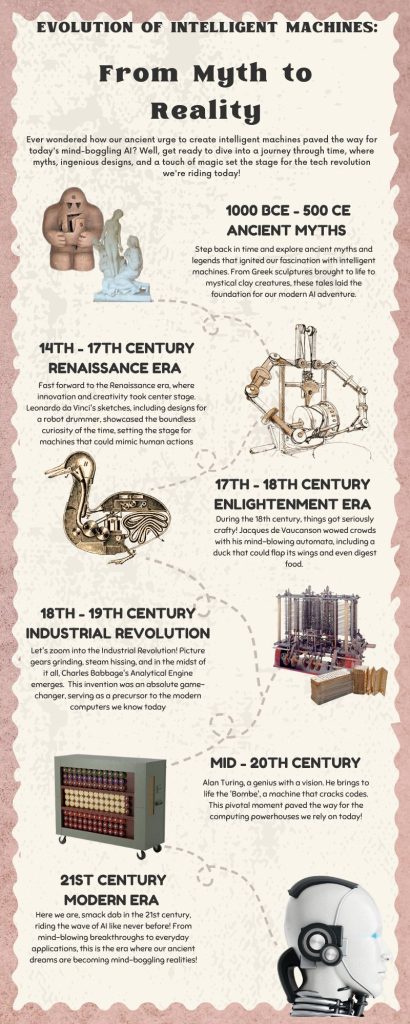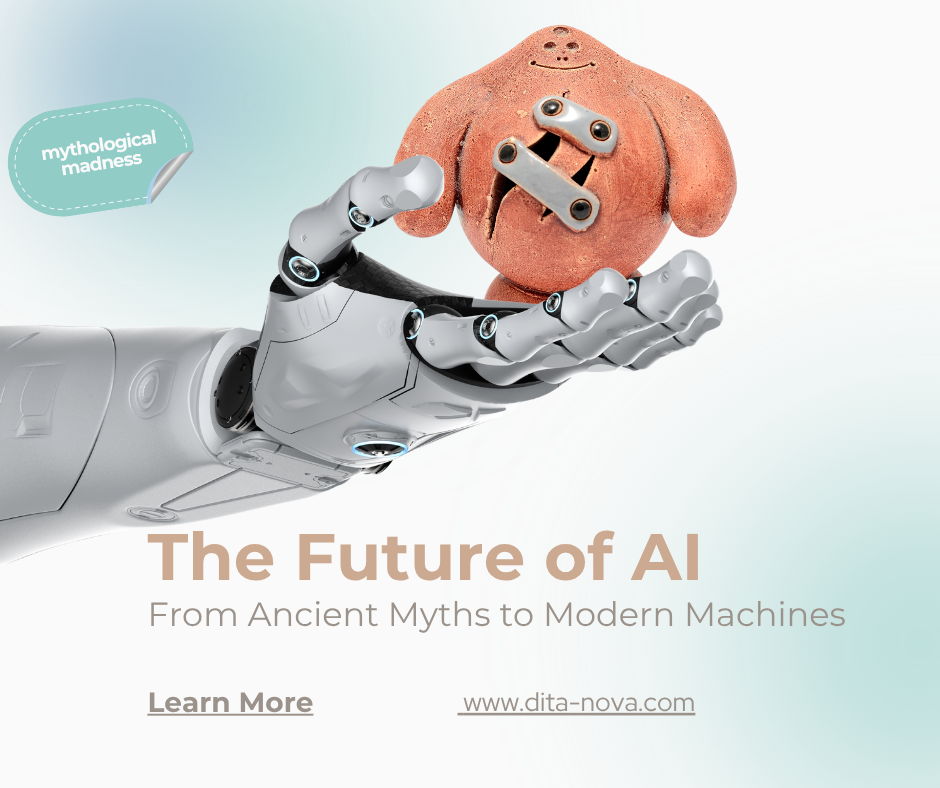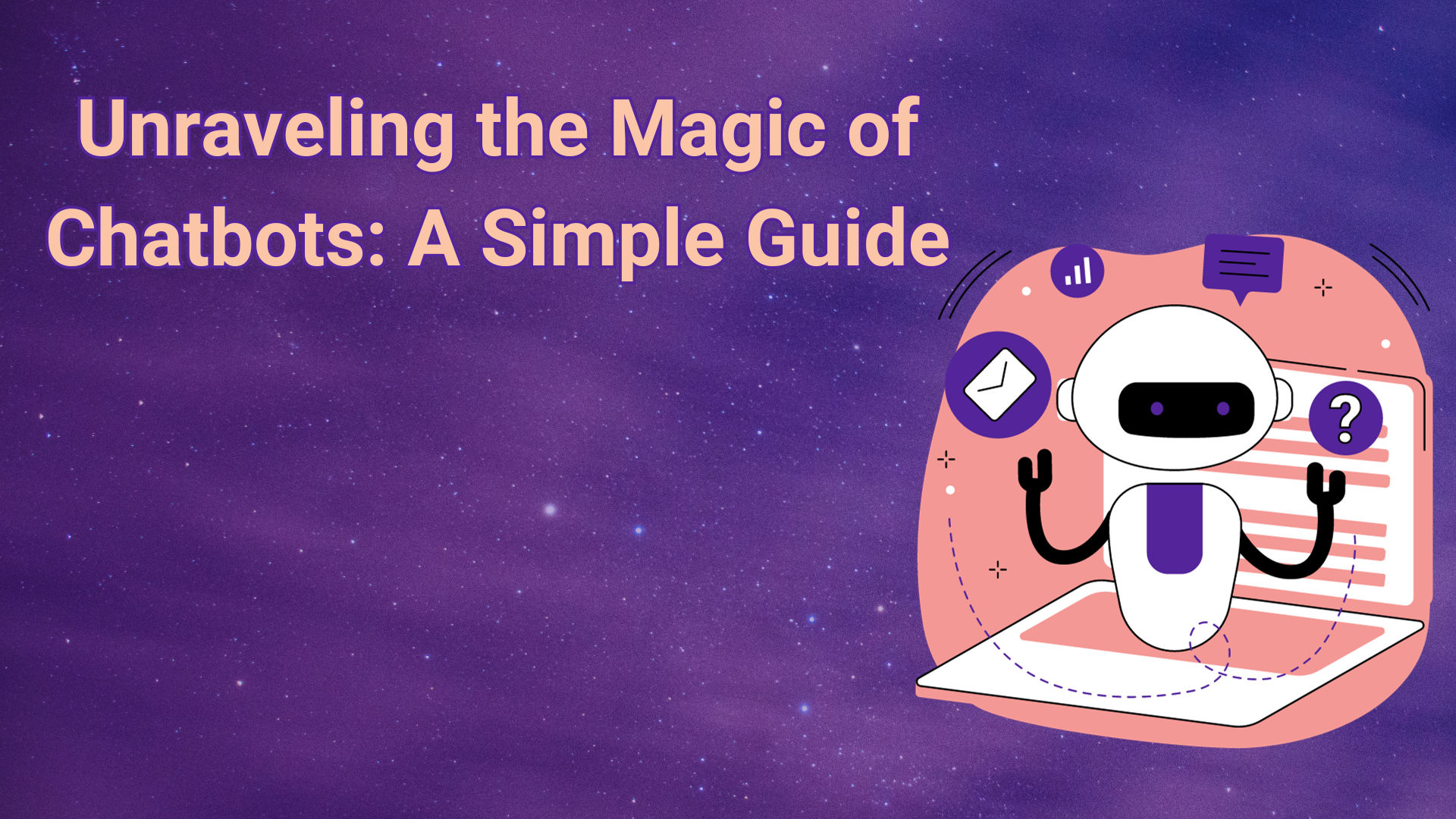So you’re probably wondering about that Golem on the cover picture, right? Stick around – I promise there’s method to my mythological madness. The future of AI isn’t just about silicon chips and neural networks. It’s rooted in humanity’s age-old obsession with breathing life into the lifeless, creating companions from clay, and making machines that think like us.
Let me take you on this wild ride through history, where ancient dreams meet cutting-edge reality, and where every myth was basically a primitive product roadmap for artificial intelligence.

Ancient Blueprints: When Myths Met Machine Dreams
Here’s the thing about our ancestors – they were basically the original AI visionaries, just without the venture capital funding. These ancient storytellers were crafting intelligent beings in their tales long before anyone knew what a computer was.
Take Pygmalion and Galatea from Greek mythology. This guy literally sculpted his perfect woman because he couldn’t find anyone who met his standards (talk about high expectations), and boom – Aphrodite works her divine magic, and she comes alive. Sound familiar? It’s essentially the same impulse driving today’s AI developers: create the perfect intelligent companion.
And then there’s the Jewish legend of the Golem – now we’re getting to why that mystical clay figure is gracing our cover. Rabbi Loew shaped clay into a protective guardian, programming it (if you will) with specific instructions. The parallels to modern AI are uncanny: both lack human consciousness, both operate within parameters set by their creators, and both represent humanity’s desire to create intelligent helpers.
These weren’t just bedtime stories – they marked humanity’s first attempts to conceptualise artificial intelligence. Long before Charles Babbage dreamed of computing, people were already imagining the future of AI.
Renaissance Revelations: Leonardo’s Mechanical Prophecies
Fast-forward to the Renaissance, where Leonardo da Vinci was basically running a one-man tech startup. Sure, everyone knows about “The Last Supper,” but this polymath was sketching out mechanical knights and automated devices like he had a direct line to the future of AI.
His designs weren’t just artistic fantasies – they were practical blueprints for autonomous machines. Flying machines, prototype tanks, early automobiles – da Vinci was essentially creating the Renaissance equivalent of a tech demo reel. These mechanical contraptions showcased humanity’s growing curiosity about creating beings that could perform tasks independently.
The Enlightenment’s Greatest Hits: When Automatons Became Celebrities
The Enlightenment era was basically the golden age of “hold my beer” engineering. In 1739, Jacques de Vaucanson dropped the mic with his Digesting Duck – a mechanical marvel that could eat, digest, and excrete. I know, I know, it sounds like the world’s most elaborate party trick, but this was revolutionary stuff.
This automaton marked humanity’s first serious attempt at replicating biological processes through machinery. While it might seem worlds apart from today’s AI, it was actually a critical stepping stone in understanding how to make machines mimic life itself – a core principle in the future of AI development.
Industrial Revolution: The Computing Genesis Story
The Industrial Revolution gave us the technological foundation we desperately needed. Enter Charles Babbage and his Analytical Engine – the great-great-grandfather of every computer you’ve ever cursed at. This mechanical beast used gears and punch cards to perform complex calculations, proving that machines could handle abstract thinking tasks.
Babbage’s vision was so ahead of its time that people thought he was slightly unhinged. But his inventive spirit demonstrates how one person’s “crazy” idea can fundamentally reshape the future of AI and technology as a whole.
Mid-20th Century: Turing’s Code-Breaking Revolution
And then came Alan Turing – the man who basically wrote the playbook for intelligent machines. His ‘Bombe’ machine didn’t just crack codes; it cracked open the possibilities of what machines could accomplish when they think strategically.
This wasn’t just about computational power – it was about machines demonstrating genuine problem-solving intelligence. Turing’s contributions continue echoing through every AI breakthrough today, proving that the future of AI was being written in wartime Bletchley Park decades before Silicon Valley became a thing.
The Modern Era: Living in the AI Revolution
Here we are in the 21st century, no longer dreaming about intelligent machines – we’re living with them. The future of AI isn’t some distant sci-fi fantasy anymore; it’s your phone recognizing your voice, your car avoiding accidents, and your streaming service somehow knowing your terrible taste in movies better than you do.
We’ve gone from clay golems to neural networks, from mechanical ducks to machine learning algorithms. Every ancient myth about artificial beings has found its modern technological expression, and frankly, it’s both thrilling and slightly terrifying.
What This All Means for Tomorrow
The future of AI isn’t just about faster processors or smarter algorithms – it’s about fulfilling humanity’s oldest dreams of creating intelligent companions. From Pygmalion’s perfect woman to today’s conversational AI, we’re following the same fundamental desire: to create beings that can understand, communicate, and maybe even care.
As we stand at this technological crossroads, looking at that Golem on our cover, we’re reminded that artificial intelligence isn’t just a modern invention – it’s the latest chapter in humanity’s longest-running story. The dreams of our ancestors are becoming reality, one algorithm at a time.
See more : Timeless Wisdom for Ethical AI: What the Ancients Got Right
The Thread That Connects It All
Our journey from mythical automatons to modern AI reveals one undeniable truth: the future of AI has always been written in humanity’s imagination first, then slowly crafted into reality by determined innovators. Each generation builds on the dreams of the last, creating a continuous thread of innovation that stretches from ancient clay workshops to Silicon Valley laboratories.
That Golem on the cover? It’s not just decoration – it’s a reminder that today’s AI revolution is tomorrow’s ancient history, and somewhere, someone is already dreaming up the next impossible thing.
The future of AI belongs to those bold enough to turn myths into machines, dreams into code, and imagination into intelligence. And honestly? We’re just getting started.



